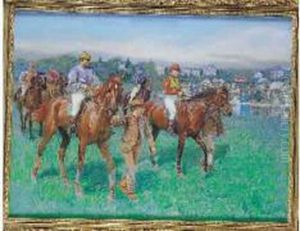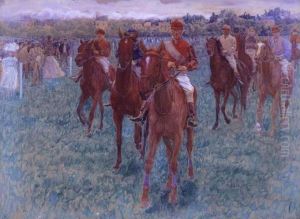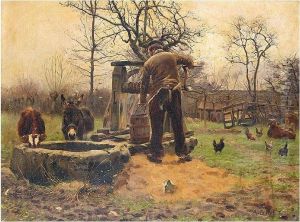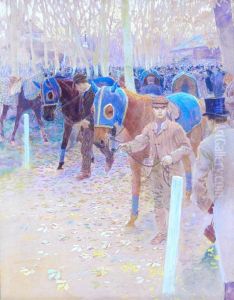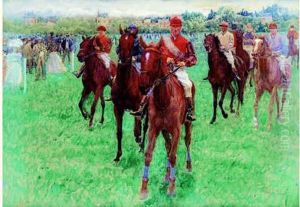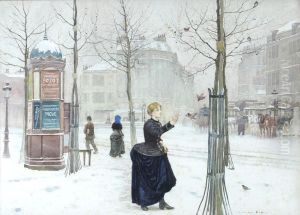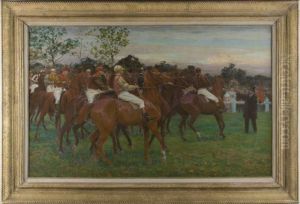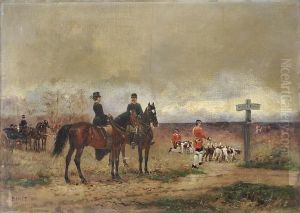Adolphe Binet Paintings
Adolphe Binet was a French painter best known for his works depicting historical scenes, portraits, and genre paintings. Born in 1825 in France, Binet lived during a period of significant artistic change, which saw the rise of movements such as Realism and Impressionism. Despite the transformative art scene around him, Binet adhered to a more traditional, academic style of painting, which was characteristic of the mid-19th century.
Binet received his artistic training at the École des Beaux-Arts in Paris, the premier art institute in France, which was a breeding ground for many notable artists of the time. Under the tutelage of established painters, he honed his skills in drawing and painting, developing a firm grasp of the academic principles that governed art production during his early career.
Binet's works were often inspired by historical events and literature, and he was known to paint with a clear narrative in mind, focusing on the human figure and its emotional expressions. He exhibited his paintings at the Salon, the official art exhibition of the Académie des Beaux-Arts in Paris, which was the main showcase for French artists to present their work to the public and potential patrons.
Though not as widely recognized as some of his contemporaries, Binet’s art was appreciated in his time for its clarity, attention to detail, and adherence to classical techniques. His portraits were particularly noted for their elegance and the skill with which he captured the likeness and character of his sitters.
Adolphe Binet passed away in 1897, leaving behind a body of work that, while perhaps not groundbreaking, represents the dedication to craft and the historical focus of many academic painters of his era. His paintings continue to be of interest to those studying 19th-century French art, especially as examples of the persistence of traditional styles in the face of emerging modernist movements.
